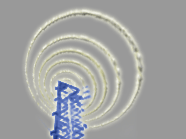| |
Devices of Protest: Technology and Social Change

Course Description
Terror, violence, and dissent--each of these terms evokes images rife
with personal, national, racial or class conflict. This course explores
the various devices that are used in accomplishing the goals of armed
struggle through a subversive use of technology (printed manifestos,
leaflets, documentary film, community television and radio, autobiography)
and the literary and filmic representations of terrorism and violence
within various national literatures and cinemas.
Source Material
Literary and Theoretical Background Texts
Ted Kaczynski, The Unabomber Manifesto
White Rose Manifestos
Red Army Faction communiqués
Franz Kafka, "In the Penal Colony"
Doris Lessing, The Good Terrorist
Georg Büchner, Danton’s Death
Elie Wiesel, Dawn
Brendan Behan, The Hostage
Patricia Hearst, Every Secret Thing
Walter Laqueur, The Terrorism Reader
Selections from: Heidegger, Foucault, Dery, Chomsky, &c.
Films
The Terrorist (Sivan 1998)
Closet Land (Bharadwaj 1991)
Germany in Autumn (Reitz/Schumbert 1997)
Rosa Luxemburg (von Trotta 1986)
The Legend of Rita (Schlöndorff 1999)
The White Rose (Verhoeven 1983)
Danton (Wajda 1982)
Marat/Sade (Brook 1966)
Arlington Road (Pellington 1999)
The Crying Game (Jordan 1992)
The Manchurian Candidate (Frankenheimer 1962)
One Day in September (Macdonald 1999)
Exodus (Preminger 1960)
The Interrogation (Bugajski 1982)
Websites
The Center for the Study of Technology and Society <http://www.tecsoc.org>
Terrorism Research Center <http://www.terrorism.com>
Arm the Spirit for Revolutionary Resistance <http://burn.ucsd.edu/~ats>
|
|

